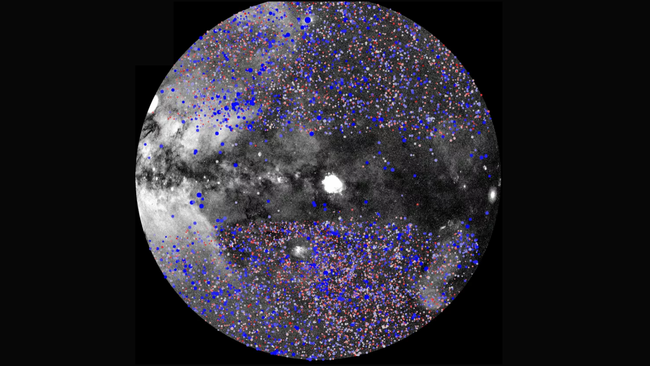The standard model is confirmed again
A new analysis of the evolution of galaxy clusters in the eROSITA study of cosmic X-ray sources may shed light on the long-standing mystery of the inhomogeneity of matter in our Universe. In addition, these results may help unravel other mysteries of space.
The first phase of the eROSITA all-sky survey, completed in February 2022, provided precise measurements of the total amount of matter in the Universe and its homogeneity. The data could shed light on the discrepancy between the standard model of cosmology's predictions and observations of the cosmic microwave background (CMB), which occurred immediately after the Big Bang. The attitude of scientists to the level of inhomogeneity of matter in the Universe still remains ambiguous.
The problem known as the «S8 voltage», associated with the Hubble voltage, is one of the key studies of the Universe. The S8 parameter is used to quantify the amplitude of matter vibrations over significant spatial scales. Previously, some scientists had suggested that a new physical model would be needed to solve this mystery. However, new eROSITA data allows us to be more optimistic and suggest that the S8 stress can be explained without the need to radically change our understanding of cosmology.
eROSITA has provided precise measurements of the evolution of galaxy clusters, opening new opportunities for further study and understanding of the evolution of the Universe. Esra Bülbül, lead scientist at eROSITA's Clusters and Cosmology Group, emphasizes that the cosmological parameters measured from galaxy clusters are consistent with observations of the cosmic microwave background radiation. This indicates that the same cosmological model operates from the first moments after the Big Bang until the present time.
The standard model of cosmology, known as the cold dark matter model (ΛCDM), states that the Universe immediately after the Big Bang was a hot, dense collection of photons, electrons, and protons. During this time, electrons scattered photons endlessly, meaning the universe was essentially opaque. This continued until about 400,000 years later, when the Universe expanded and cooled enough to allow electrons and protons to come close enough to form bonds and create the first hydrogen atoms.
In the era of reionization, the Universe became «transparent» for light. This «first light» now fills the Universe almost perfectly evenly and is known as the cosmic microwave background radiation. And since this light existed before the first stars and galaxies appeared, the cosmic microwave background radiation is an excellent tool for tracking the evolution of the cosmos.
As the Universe evolved, the first atoms clustered together to form the first gas clouds, then the first stars, which gathered into galaxies, which formed the first galaxy clusters, eventually leading to the formation of some of the largest structures in the known Universe.
Observations of these clusters using eROSITA, the main instrument on board the Russian-German spacecraft «Spektr-Roentgen-Gamma» (SRG) show that visible matter and dark matter account for 29% of the total energy density of the Universe, which is consistent with measurements of the cosmic microwave background.
When observing galaxy clusters, eROSITA was also able to measure the heterogeneity of matter using the S8 parameter. Although previous cosmic microwave background experiments suggested a higher value of S8 than predicted by the standard model, eROSITA's observations of this cosmic «fossil» background are more consistent with these theoretical predictions.
Thereby, new data in support of the standard model of cosmology indicate that it has indeed been preserved since the Big Bang and throughout the entire existence of the Universe.
eROSITA's observations of galaxy clusters have also helped scientists learn more about neutrinos, which have such low mass and charge that they are almost impossible to detect. In fact, 100 trillion of them pass unnoticed through our bodies every second.
The mass of neutrinos allows them to travel at speeds approaching the speed of light, which is why astronomers call them “hot”. Here, temperature is a measure of how fast the particles are moving. This means that neutrinos can smooth out the distribution of matter in the Universe, and this can be measured by studying the evolution of the largest known cosmic structures.
Combining eROSITA measurements of galaxy clusters with observations of the cosmic microwave background radiation has provided the most accurate measurements of the total neutrino mass.
But the knowledge that eROSITA provided about the Universe does not end there. Data from this instrument should also be able to reveal the growth rate of the largest structures in the Universe, as predicted by general relativity. Early analysis of 12,247 optically identified galaxy clusters studied by eROSITA shows that in more recent cosmological times the growth rate of these clusters was slower than predicted by general relativity.
«Perhaps we are on the verge of a new discovery. If confirmed, eROSITA will pave the way for new theories beyond general relativity», — said one of the study's authors, Emmanuel Artis.

